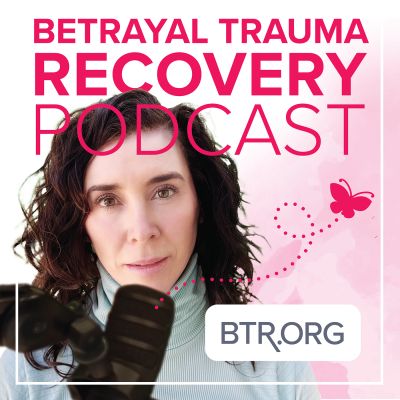btr.org - btr.org has daily, online Group and Individual Sessions for victims of emotional & psychological abuse and sexual coercion. For women experiencing pain, chaos, and isolation due to their husband’s lying, gaslighting, manipulation, porn use, cheating, infidelity, emotional abuse, and narcissistic abuse. Labeling a victim as "codependent" is a form of victim blaming. Pornography addiction / sex addiction are a domestic abuse issue. Narcissistic abuse is not a communication issue. We help women who are married, separated, or divorced heal through establishing emotional safety. If you suspect your husband is a narcissist, a pornography addict, or emotionally abusive, this podcast is for you. Every woman on our team has experienced betrayal trauma first hand. To learn more about Betrayal Trauma Recovery, visit BTR.ORG
https://www.btr.org/podcast/
episode 152: 3 Ironclad Steps To Safely Leave Your Abuser
One of the most difficult decisions you may face is deciding when and how to safely leave your abuser.
At BTR, we affirm every woman's right to emotional, sexual, and physical safety. For many victims, this means separation or divorce.
Lee, a member of the Betrayal Trauma Recovery community, joins Anne Blythe on the free BTR podcast to break down her own powerful journey of identifying abuse and finding the courage and strength to leave her abuser. Lee, like many women, had already left her abuser seven times before ending the relationship for good. For more, tune in to the BTR podcast and read the full transcript below.
Identify The Abuse: A Foundational Step To Safely Leave Your Abuser
There are many reasons that victims have trouble identifying the abuse in their relationships.
At times you're thinking, well, he doesn’t scream at our kids so he must be a good guy. Or, the other night he was with us and he was great, so I’m lucky. A lot of women are in abusive relationships and they don’t realize it because they think, I’m so lucky, he’s such a great guy. It’s really, really common.Anne Blythe, founder of Betrayal Trauma Recovery
* Family, friends, and clergy minimize the abuse* Abusers and victims may "scale" the abuse (at least it's not ____)* Victims may compare their abusive partner to more obviously abusive men and feel indebted to their abuser* Abusers use gaslighting, blame-shifting, and other forms of manipulative abuse to keep victims confused and unable to pinpoint the abuse* Abusers condition victims to exaggerate the abuser's good qualities and ignore red flags and blatantly abusive behaviors* Victims may feel afraid to identify the abuse because of the ramifications
When victims courageously identify abuse, they are setting the foundation for a future of safety and healing.
How Can Victims Identify Abuse?
A victim's Understanding and accepting the word "abuse" may come gradually or in one intense moment.
To identify abuse, many women need:
* Education about abuse and trauma (books, the BTR podcast, and BTR articles can help)* A network of trauma and abuse-informed supporters* Connection with other victims who listen, validate, and offer help
https://www.youtube.com/watch?v=MsH_STAU12A
While victims may not immediately identify all of the ways that their abuser is harming them, it's important to take action by setting boundaries based on what they have identified. Women can continue setting and maintaining boundaries as the depth of the abuse becomes clearer.
Safely Leave Your Abuser: Determine Your Safety Needs
Even after women have accepted the truth about the abuse in their relationship, it can be difficult to set firm boundaries and even more difficult to leave the relationship.
Many women face roadblocks when facing the decision to leave, including:
